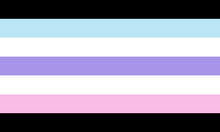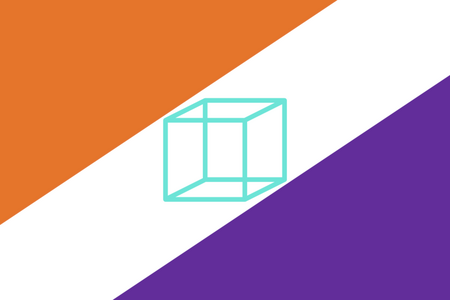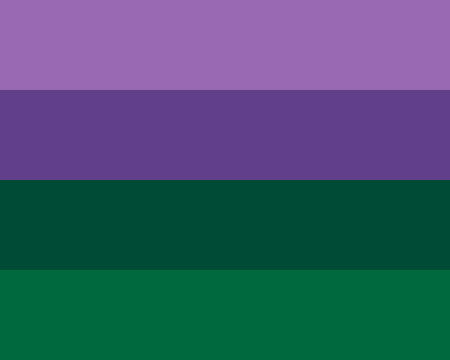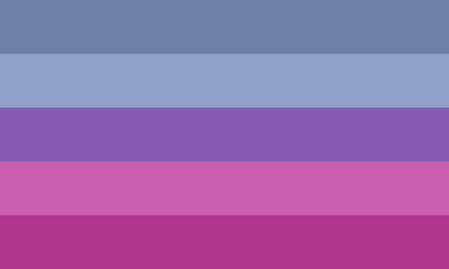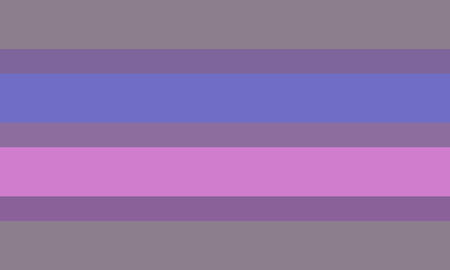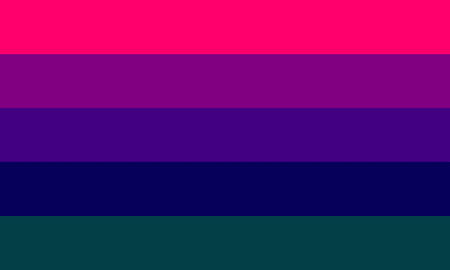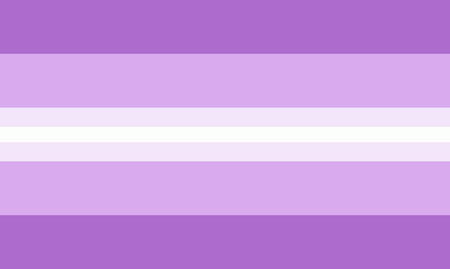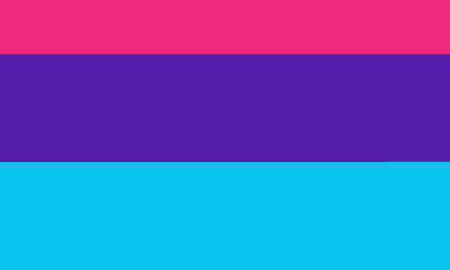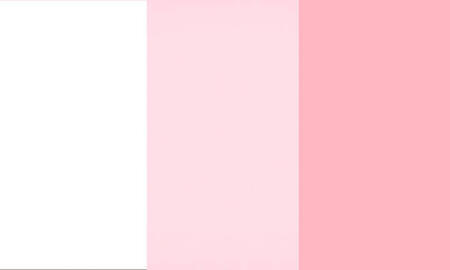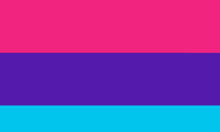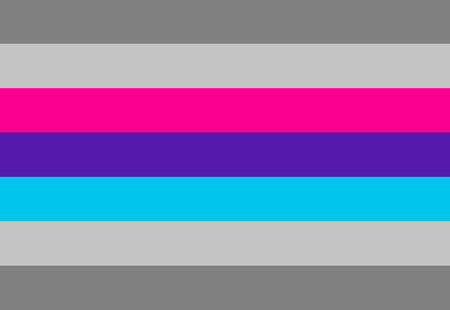Whilst non binary, androgyne is more binary of an binary attached identity than others, thus the black and white. It weaves between the males and female comfortably, and works in suitable harmony. The blue represents masculinity, the pink represents femininity. The purple represents a comfortable blending of masculinity and femininity to make the unique identity that androgyne is. It also represents androgyne being a non binary identity.
Orange is a lesser known masculine colour, one that doesn't play off the Pink Vs Blue aesthetic of most androgyne flags. Purple, similarly, is a lesser known feminine colour, despite being a mix of masculine colours (red and blue). The white represents an absence of gender, as is on the non-binary flag and the genderqueer flags. The symbol is the Necker Cube, an optical illusion that can look both concave and convex, first proposed as a symbol for the androgyne community by Raphael Carter in 1996. Th teal is a mixture of two colours, both gendered on opposite sides of the binary.
Green is gender neutral, and represents androgyny achieved through the negotiation of masculine and feminine characteristics. Purple is neutral, but s combined from pink/red and blue, which represents androgyny achieved through the combination of masculine and feminine characteristics. Purple and green are also complimentary colours, which represents androgyne being an identity that is masculine and feminine, whilst also being its own separate gender.
The dark blue stripe represents masculinity, the light blue stripe represents community. The purple represents the androgyne identity, the light pink represents love and the dark pink represents femininity. The flag was initially designed to be less eye straining to view on screens than the most common androgyne flag.

